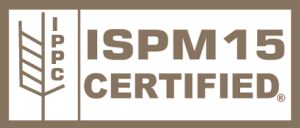Challenges when Exporting
Exporting outside of the United States opens up a world of opportunities. Ensure your company is staying compliant and following the right steps to avoid losing money while boosting sales.
Incoterms
Failure to understand or establish specific Incoterms could not only be costly for the shipper or consignee, but cause friction in your sales relationship. Incoterms are agreed upon between the seller and buyer in regards to when and where the risk and responsibility of the goods and transport are transferred. Incoterms are not binding and they are solely used as a guide. When selling goods abroad, we recommend CIF (cost, insurance freight) Terms.
Download an Incoterms® 2010 Chart of Responsibility Guide
Selection & Use of Credit Terms
Far too many potential export sales are lost as the exporter gives up on negotiating workable credit terms. Negotiations between US Companies and overseas buyers can become cumbersome and timely. Not to mention, a communication and cultural barrier occurs. It is suggested that an exporter build in all additional costs into their pricing. We also suggest that the exporter consider letters of credit or establishing a relationship between their bank and the buyer’s bank right off the bat. Furthermore, it is important to understand the benefits of working with our own EXIM Bank of the United States. This is a great option to assist your buyer with financing.
For more information on the EXIM Bank, email us.
Complying with USA Export Regulations
According to Foreign Trade Regulations, Subpart H, sections 30-70 – 30.74, any party who knowingly files false or misleading information is subject to criminal penalties up to $10,000 per occurrence and/or imprisonment for up to 5 years. Experienced freight forwarders and Trade Compliance attorneys can assist in audits or consulting to ensure your company is staying compliant with U.S. laws.
Tips to comply
- Supply the correct Schedule B number on EEI (AES) filings. Your export freight forwarder should be filing EEI (AES) on your behalf, and a good forwarder will question the Schedule B if it doesn’t seem to match up with your commodity. Talk with your forwarder to ensure you have classified your goods correctly.
- Know the countries you can never ship to without an export license and the ones that have certain restrictions. Take very special care when communicating with them. Exporters are required to do due diligence prior to exporting, so be sure the export is within the scope of U.S. export regulations.
- Know your customer! Shipping goods to an “allowed” country that will then re-forward or re-sell your goods onto a restricted country is still considered your responsibility and liability. Ask the right questions and get to know your buyer before making an agreement. You can go to jail for this one, so be careful!
- Follow “reasonable care,” by screening both individuals and company names on the Denied Persons’ List and other government watch lists. Many forwarders check this list on a daily basis.
Export Documentation
Failure to supply export documents in a timely manner results in delayed shipments and storage… which means more expense.
- Supply as much information as possible to your customer.
Failure to show a buyer’s complete street address, contact name, phone & email address can result in shipment delays, excessive demurrage, and pier storage at destination. This can be very costly and cause hiccups in the seller-buyer relationship. - Certificates Of Origin.
Avoid claiming USA made goods that were not made in USA. Know what your goods are made of, where all the material originated, and what you can claim. Know your free trade agreements and relationships with other countries. - Spare Parts.
Spare parts shipments are especially difficult to document. A detailed packing list is recommended and advice from your forwarder when completing it would be helpful. - EEI (AES) Filings.
Origin information is filed with the US Government via EEI (AES) filings typically via a freight forwarder. It is best to supply required information as soon as possible.
Required Documents when Exporting:
Failure to supply export documents in a timely manner results in delayed shipments and storage. The following export documents are typically required, and should be sent as soon as possible to your freight forwarder:
- Shippers export declaration or POA
- Shipper’s Letter of Instructions or BOL instructions
- Packing list
- Commercial invoice
- Partner Government Agency required docs
- Any required docs by the buyer & its native country
Note, it is also important to communicate with your buyer on what documents are required by their country in order for them to make customs clearance in a timely manner.
 Preparing goods and anticipation of loading needs
Preparing goods and anticipation of loading needs
Know the size and number of containers required. It is an expensive mistake to cancel or revise container sizes once they are on the way. Many countries require and strongly enforce ISPM-15* rulings for all wood packaging and dunnage. Make sure you know how to crate and pack your goods to comply with other countries’ regulations. When possible, all freight should be palletized, banded and shrink wrapped. Ask your forwarder for tips.
*International Standards For Phytosanitary Measures No. 15 (ISPM 15) is an International Phytosanitary Measure developed by the International Plant Protection Convention (IPPC) that directly addresses the need to treat wood materials of a thickness greater than 6mm, used to ship products between countries. Scarbrough is ISPM-15 certified.
Document your Goods Shipped
It is always a good idea to take pictures, provide accurate packing lists, and count each piece when possible. Include the details per each container and when loading, make the piece numbers visible for pictures. This will help reduce shortage statements claimed by foreign buyers.
Prepare goods to avoid damage claims
Put your packing money into the pallets used to eliminate or reduce damage and shortage claims. If you are shipping less than container load, do not “overhang” your cargo on pallets. Try to never ship any loose pieces. Mark your freight if it is not stackable. Ensure blocking and bracing is completed in the container to avoid damage.



Overseas Problems
If there is a damage claim, be sure the insurance company is offered time to make an inspection of damaged goods as quickly as possible. If time is not allowed, be sure your buyer takes good pictures. If shipping to Australia or New Zealand and many other countries, be sure no mud, excessive dirt or any grain or grain hulls are visible to Customs inspectors.
Training
There are many challenges to exporting, yet we can make it run through a seamless process. In fact, it is our job to make your job easier. If you would like to discuss any of your export needs with our team, don’t hesitate to contact us. We have also developed a free training our our YouTube Channel. Subscribe today and share with your team!

